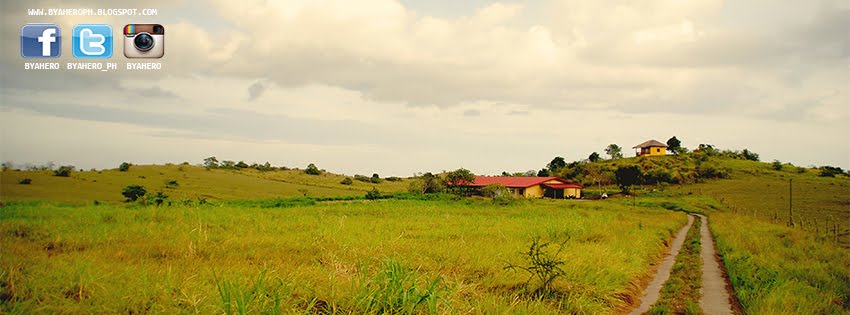Showing posts with label Monument. Show all posts
Showing posts with label Monument. Show all posts
Sunday, September 5, 2010
Tuesday, August 31, 2010
Statue of Rajah Humabon
The regal statue of Rajah Humabon at Plaza Hamabar - the hospitable Cebuano chieftain who opened the portals of friendship which paved the way for Spain’s lasting legacy in the Philippines.
Wednesday, July 7, 2010
Tuesday, July 6, 2010
Gen. Jose Ignacio Paua: A Chinese General in the Philippine Revolution
There are many little-known, unsung heroes in the history of the Philippine revolution. One of them was Gen. Jose Ignacio Paua, the only pure-blooded Chinese general who supported the Katipuneros in the fight against the Spaniards and later joined Gen. Emilio Aguinaldo’s army in the short-lived war against the American colonizers.
Monday, July 5, 2010
Bonifacio Monument
The main landmark of Caloocan City, the Bonifacio Monument is located at the intersection of Rizal Avenue and EDSA. The monument commemorates the most proletarian of all Filipino heroes, Andres Bonifacio. The monument likewise marks the first encounter between Andres Bonifacio and his revolutionary group called Katipunan with the Spanish soldiers on August 3, 1896. The monument was immortalized by the great Filipino national artist Guillermo(Botong)Tolentino in 1933 together with Guillermo Masangkay, one of Bonifacio's generals adapting the facing of Bonifacio's Statue towards his birthplace in Tondo, Manila, which is situated on the south of Caloocan.
Potenciano Gregorio Monument in Sto. Domingo, Albay
Potenciano Gregorio, often referred to as Potenciano Gregorio, Sr. was a Bicolano musician. He was the composer of Sarung Banggi (One Evening), the most famous song in the Bikol language.
Potenciano Gregorio was born in what was then known as the town of Lib-og (now Santo Domingo) in the province of Albay in the Philippines. His parents were Narciso Gregorio and Canuta Valladolid (some sources spell his mother's name as Balladolid). At an early age he learned to play the violin and was soon recognized for his talent. He subsequently learned to play other instruments such as the bandurria, the guitar, and piano. Later he started writing music for the local church by himself or in collaboration with his older brother Bernardo who organized the local band Banda de Lib-og. Potenciano later became the bandmaster of the same band until he joined the Philippine Constabulary Band in 1919.
Thursday, July 1, 2010
Wednesday, June 30, 2010
Subscribe to:
Posts (Atom)
Popular Posts
-
Festivals in Camarines Norte • Pinyasan Festival – Camarines Norte • Rahugan Festival - Basud • Palong Festival - Capalonga • Bant...
-
Pottery is a century old industry of Tiwi in Albay. It provides with world-class decorative ceramics made of terra cotta and the re...
-
Rizal Monument in San Juan City This coming sunday, June 19 is the sesquicentennial or 150th birth anniversary of the country’s nation...
-
Tribu Himag-Ulaw Festival of Placer, Masbate emerged as champion in the 2014 Gayon Bicol: Festival of Festivals Showdown sa Daragang Ma...
-
Angono is a 1st class urban municipality in the province of Rizal. Angono came from the word "ang nuno" meaning an old man on the ...
-
PHILIPPINE FESTIVALS AND EVENTS JANUARY 2016 January 1 | NEW YEAR’S DAY (Holiday) January 1 | AGUMAN SANDUK | Minalin, Pa...
-
The St. Stephen Proto-martyr Church is a place of interest in Ligao City , a sight worth seeing. St. Stephen Proto-martyr Churc...
-
Antipolo's Maytime Festival 2014 Sumakah Festival Street Dancing Competition May 1, 2014 | Antipolo City , Rizal
-
Featured Photos | Busaingan Festival 2012 | Sta. Magdalena, Sorsogon Photos by John Lester Rico | JLER iShoot
-
Featured Photos | 17th Philippine International Hot Air Balloon Fiesta in Clarkfield, Clark Zone, Pampanga Photos by Samm Belaguin ArkiS...
Popular Posts
-
Festivals in Camarines Norte • Pinyasan Festival – Camarines Norte • Rahugan Festival - Basud • Palong Festival - Capalonga • Bant...
-
Rizal Monument in San Juan City This coming sunday, June 19 is the sesquicentennial or 150th birth anniversary of the country’s nation...
-
Urdaneta City is a 1st class city in the province of Pangasinan, Philippines. Urdaneta City Hall History There are many versions on how Urda...
-
Pottery is a century old industry of Tiwi in Albay. It provides with world-class decorative ceramics made of terra cotta and the re...
-
Legazpi Boulevard is a coastal road and seawall project in Legazpi City. It is more than four kilometer seaside road with a panoram...
-
CALENDAR OF FESTIVITIES JANUARY January 1 | NEW YEAR’S DAY (Holiday) January 1 | AGUMAN SANDUK | Minalin, Pampanga Januar...
-
PHILIPPINE FESTIVALS AND EVENTS JANUARY 2016 January 1 | NEW YEAR’S DAY (Holiday) January 1 | AGUMAN SANDUK | Minalin, Pa...
-
St. Luke's Medical Center is a tertiary referral hospital located in Bonifacio Global City, Taguig City. It is the most advanced ho...
-
Featured Photos Ibalong Festival 2012 Epic Street Presentation Contingent # 11 | Philippine Science High School, Goa, Camarines Sur Photo...
Popular Posts
-
Festivals in Camarines Norte • Pinyasan Festival – Camarines Norte • Rahugan Festival - Basud • Palong Festival - Capalonga • Bant...
-
St. Luke's Medical Center is a tertiary referral hospital located in Bonifacio Global City, Taguig City. It is the most advanced ho...
-
CALENDAR OF FESTIVITIES JANUARY January 1 | NEW YEAR’S DAY (Holiday) January 1 | AGUMAN SANDUK | Minalin, Pampanga Januar...
-
Green Park Resort, Atimonan Quezon RESORTS & HOTELS IN ATIMONAN, QUEZON PROVINCE De Gracia Beach Resort Brgy. Balubad 0923‐7...
-
PHILIPPINE FESTIVALS AND EVENTS JANUARY 2016 January 1 | NEW YEAR’S DAY (Holiday) January 1 | AGUMAN SANDUK | Minalin, Pa...
-
OAK PARK HOTEL & RESIDENCES Padillo Building, Enriquez cor. Hermana Fausta Sts., 4301 Lucena City Phone: (042) 373-6764 or 710-6148 DIAM...
-
The Oriental Legazpi Hotels THE ORIENTAL LEGAZPI (First Class) Sto. Nino Village, Taysan, Legazpi City Tel: (+632) 470 9737 | 404 7501 |...





.jpg)




.jpg)
.jpg)



.jpg)
.jpg)
.jpg)

.jpg)


